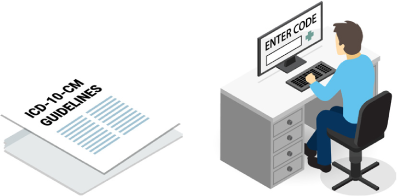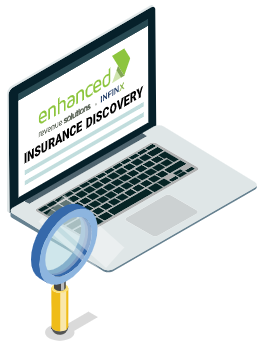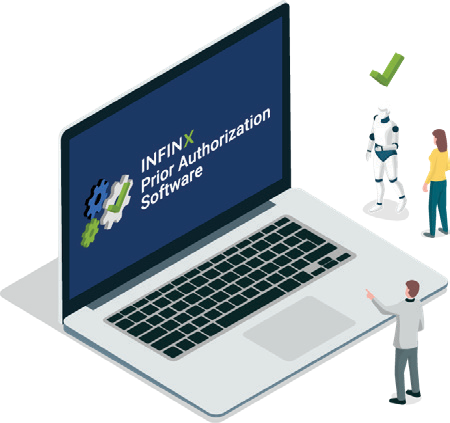White Paper
Innovative Revenue Cycle Management Solutions for Cardiology Practices


Executive Summary
Throughout the spectrum of healthcare, providers are impacted by increasing governmental regulations, insurance payer changes, and transitioning patient expectations. With cardiology, the revenue cycle management (RCM) process points to five areas where significant revenue is at risk when not performed efficiently:
- coding,
- billing,
- AR management,
- bad debt/collections, and
- insurance discovery
While a cardiology practice may opt to handle these functions in-house with a mix of automated and manual systems, we outline a far superior structure that brings experienced coding and billing specialists, supported in some cases by artificial intelligence (AI) and machine learning software, as a comprehensive solution to today’s RCM process.
Eclipsing Long-Accepted Standards for RCM
Cardiology is facing significant challenges as we enter the 2020s. Expanding oversight and regulation from government entities and insurance companies, new (or reimagined) value-based payment models, and RCM-specific issues like rising bad debt and uncollectible amounts leave cardiology groups searching for solid footing heading into the future.
From the macro perspective, maximizing revenue in the healthcare industry’s complex third-party payer system continues to be a challenge.
With increasingly elaborate payment models and fee schedules, and escalating payer scrutiny for advanced cardiology procedures and testing, it’s never been more critical to stay current with new technological advances in the revenue payment lifecycle.

To add to the complexities, according to the Healthcare Financial Management Association (HFMA), the CDC has released findings showing that 47% of commercially-insured consumers were choosing a High Deductible Health Plan (HDHP) hoping to reduce household health insurance costs by lowering premiums.1 This shift in financial responsibility cfrom government and private insurance payers to consumers has made it imperative for cardiology practices to embrace new technology or risk precious margin on the accelerated growth of bad debt.
5 RCM Processes to Enhance Practive Revenue
For these purposes, let’s define the healthcare payment lifecycle as twofold: 1) patient access, including prior authorization and insurance verification, coupled with 2) RCM—coding, billing, AR management, bad debt/collections, and insurance discovery. By focusing on RCM, maximum efficiency can be gained, and previously lost, or delayed revenue can be captured.
Let’s look at each of the five RCM components and their possible issues:
1. Coding for Success
With annual updates and changes, the ICD-10-CM coding system presents a multifaceted set of issues, especially for a specialty like cardiology with complex diagnoses and procedure options. The balancing act can be quite challenging when capturing charges and documentation between practice sites, hospitals, and outpatient facilities during a typical day and, no matter how organized, requires a coordinated effort for providers and staff alike.

Following each patient encounter, the superbill or patient charge slip is submitted. At that point, the first step is to determine the correct codes and levels of service. However, whether it’s due to lack of time or chart completion expectations, procedures are often under-coded, miscoded, documentation is missing, or service level is misclassified. This causes severe problems that impact revenue, including denials, underpayment, and abandonment of claims.


2. Timely Billing is Key
One of the most significant pain points for cardiology groups can be projecting the billing process workflow and the inability to scale for the fluctuating workload quickly. From charge entry to payment posting, everything can be either overloaded or slowed to a crawl based on staffing within the billing department.
Staffing issues from unexpected changes in employment status, family leave requests, and hiring mis-queues can create bottlenecks that slow down claims processing and impact bottom-line revenue. This creates further problems with ancillary responsibilities, such as resolving credit balances and managing contract performance to aid in future negotiations.
3. AR Management
At a recent business management association symposium, a study (accepted industry-wide) by the Medical Group Management Association (MGMA),2 estimates the cost to rework a claim that has been denied by insurance is $25.00 for each occurrence. Even more impactful is the fact that between 50% and 65% of denied claims go unchallenged due to lack of time and/or understanding on how to proceed, thereby losing revenue completely.
With healthcare’s complex AR process, managing unpaid or rejected claims are frustrating. It creates large blocks of unproductive time while staff members sit on hold or wait in insurance payer queues, but there are often limits on the number of claims that can be submitted or questioned.


4. Reducing Bad Debt and Collections
The most frustrating component of RCM is bad debt, and those accounts must be reluctantly turned over to a collection agency for potential follow-up. These claims are often overdue because of uninsured patients or unpaid self-pay accounts and end up being written off entirely or categorized as charitable care. Bad debt can total as much as 15% of total receipts in today’s practices, and that number is sure to grow as patients assume more and more of the financial obligations for care unless something is done to curb this trend.

5. Discovering Undisclosed Insurance Coverage
Without a doubt, patients rely on their providers to guide them through the insurance maze, with many not having a clear understanding of the way insurance works or their potential responsibility. It’s no wonder that there may be undisclosed or unknown insurance coverage available to a patient that, up until now, has sat unused.

By using smarter insurance coverage discovery, cardiology practices can find potential revenue from uncompensated care and underpaid self-pay accounts through coordination of benefits opportunities, Medicaid secondary, and other complicated commercial or government payer arrangements.
Best-in-Class RCM Solutions
RCM inefficiencies can pose one of the most perplexing problems in cardiology practices today! Complex approval processes and requirements that differ by health insurance plan make claims management a challenge for even the most well-informed billing administrator. It’s not enough to rely on the status quo; groups today must be proactive in developing plans to improve operations and patient access procedures, as well as their RCM to meet the test.
With today’s focus shifting toward enhancing the patient experience and alleviating any roadblocks to collecting timely reimbursement, now is the time to consider a third-party partner to harness available technology, improve administrative workflows, scale for the inevitable fluctuations and staffing issues, and increase revenue.
Coding to Maximize Reimbursement with a Third-Party Partner
It’s imperative to accentuate the process of coding to achieve accuracy and maximize the shrinking healthcare dollar. To alleviate a cardiology practice from experiencing problems with the ongoing education- and personnel-related issues that arise with developing and maintaining a strong coding department, enlisting a third-party partner may provide an outstanding solution. A trusted outside team can absorb the workflow efficiently and code thoroughly to maximize reimbursement.

To fully capture revenue using a partner consider:
1. A paramount challenge in healthcare, and specifically, cardiology, is staying up to date on coding with ICD-10-CM, CPT, and HCPCS codes through education and knowledge building. Engaging a partner with highly-training specialists shifts that responsibility to the third-party team allowing your staff and providers to focus on quality patient encounters.
2. Demonstrated coding accuracy from an outside team minimizes your concern about human error and careless keying mistakes that can drastically affect reimbursements.

3. Expert coders will capture commonly missed tests that are billable or treatment and diagnosis decisions that aren’t adequately documented that may have slipped through in the past, causing denials and rework later.
4. From experience, highly trained coders will code to the highest degree of specificity and code to the diagnosis and not necessarily the symptom. Their coding decisions are under constant scrutiny and audited to ensure a quality coding program.
5. Coders would ensure medical documentation is not only present but accurate and complete with every patient encounter.
6. An expert third-party coding team would provide ongoing feedback for everyone impacted with comprehensive opportunities to improve the quality of the coding and documentation program.

Billing Efficiencies Brought by a Third-Party Partner
The most effective way to address the scalability issue that often stresses the billing function is to engage a third-party partner that can assume responsibility for executing all aspects of the billing process. Utilizing a scalable, cost-effective automated solution that manages billing complexities while meeting payer criteria ensures that accurate claims are submitted, paid quickly, and denials minimized.
By engaging an off-site team to provide billing support, these functions would seamlessly resolve behind the scenes:
- Charge Entry
- Payment Posting
- Credit Balance Resolution
- Contract Management
- Analytics (designed for financial management)
As a case in point, Enhanced Revenue Solutions (ERS) by Infinx, working with a large cardiology clinic in Texas with 50-60 providers, established an overall goal of claims submission within 24-72 hours of service. This allowed ERS to shave a full two weeks off the timeframe that was currently being used by the Clinic. First, by restructuring and streamlining the billing office workflow, and second, by educating and mobilizing the providers as active participants in their own RCM.3
Rely on AR Optimization Using Advanced Automation
Once a patient has been seen, and a claim has been coded and billed, there are inevitably denials and rejections that prolong payment if not outright stop revenue capture. These rejected claims make up the AR and must be worked individually to ascertain the problem and then collect the necessary information before resubmission.
Denials management is an oft-neglected process in many cardiology practices. Whether due to lack of time or clarity on next steps, denials management is often treated as busy work to be faced only when there is significant downtime. This leaves a considerable amount of money on the table in claims that merely need correction or clarification before being resubmitted for successful collection.

To optimize AR, utilize a third-party team using state-of-the-art AI-driven automation with proprietary recovery prediction algorithms to focus efforts on which denials are collectible so that energy is spent on the recovery of revenue and increase of early cash flow. By reducing write-offs and identifying the next best activity through automated algorithms based on payer guidelines and procedures, a cardiology group can be assured the maximum revenue is collected.
When evaluating claims management solution teams, consider their preferred automation technology. They should bring AI-driven software functions critical to achieving the long-term goal of permanently reducing revenue loss from denied claims:
- The ability to predict recovery, including forecasting the dollars potentially available and the timeline to achieve final collections. With machine learning algorithms, unpaid claims are evaluated on many available parameters, such as aging, payer, and modality.
- Access to predictive and deterministic criteria that prioritize follow-up strategy activities to maximize and focus human intelligence efforts where they can be most effective.
- Automated claim status checks matched with the most-likely cause, i.e., integrated insurance verification and eligibility data, CPT mismatch technology, and DOS and benefits check capabilities. Once the cause is identified, appropriate changes are made, and the claim is resubmitted.
- Auto-creation of required appeal letters, if necessary.
- Automated eFax capabilities, when required.
- The ability to perform a root cause analysis through operational analytics to find where mistakes originate upstream, including insurance verification, prior authorizations, or coding problems, so that processes can be reviewed and upgraded where necessary.
With the technology available today, each patient encounter can be verified, submitted, and followed up on in real-time. As reported in a recent Infinx Case Study, it’s conceivable to recognize a +15% improvement in 90+ days collections from using the AR Optimization Solution alone.4

Insurance Discovery to Improve Bad Debt and Collections
We know for sure—that throughout the healthcare spectrum, patients frequently present for care without understanding their insurance coverage or benefits. Phrases like “annual maximums,” “remaining deductible,” and “explanation of benefits” may be overwhelming to patients that are unfamiliar with insurance terms and how they are treated within the healthcare industry.
If your cardiology group has ended up with an outstanding amount that is treated as bad debt or uncollectible is often not from misrepresentation, but merely misunderstanding.
Couple that with the growth of patient consumerism and High Deductible Health Plans (HDHP) in recent years, we see a cascading problem that can only worsen with time. The key may be early intervention from a third-party partner using a cloud-based, AI-driven Insurance Discovery Solution.
When using an Insurance Discovery Solution, these accounts are processed through an automated coverage identifier package where patient demographics, insurance profiles, and benefits are verified, and undisclosed coverage identified. These uncompensated accounts can then be submitted to the appropriate insurance and revenue retrieved.
Summary and Conclusions
By looking at cardiology RCM practices honestly and seeking clarity on improvements that can make long-term sustainable gains, a third-party partner significantly reduces administrative burdens while recognizing a more significant bottom-line revenue and better patient experiences overall.
Instead of accepting ongoing operational shortfalls, a trusted partner brings increased administrative efficiencies that allow for a more smoothly run operation. Overall, this provides higher cash flows, faster recovery times, reduced aging, and improved margins for stakeholders. ERS by Infinx has significant experience in custom tailoring RCM programs for cardiology practices and have proven collection improvement results by 102% within 60 days.5
To learn more about opportunities to improve RCM efficiencies through a third-party partnership utilizing AI-driven automation technology with experienced billing and coding specialists, visit www.enhancedrevenuesolutions.com.
Thanks for reading. If you’d like to see the footnotes, please download this white paper as a pdf here.
About Infinx
Infinx provides innovative and scalable payment lifecycle solutions for healthcare practices. Combining an intelligent, cloud-based platform driven by artificial intelligence and automation, with our trained and certified prior authorization, coding and billing specialists, we help clients realize revenue, enabling them to shift focus from administrative details to billable patient care.
